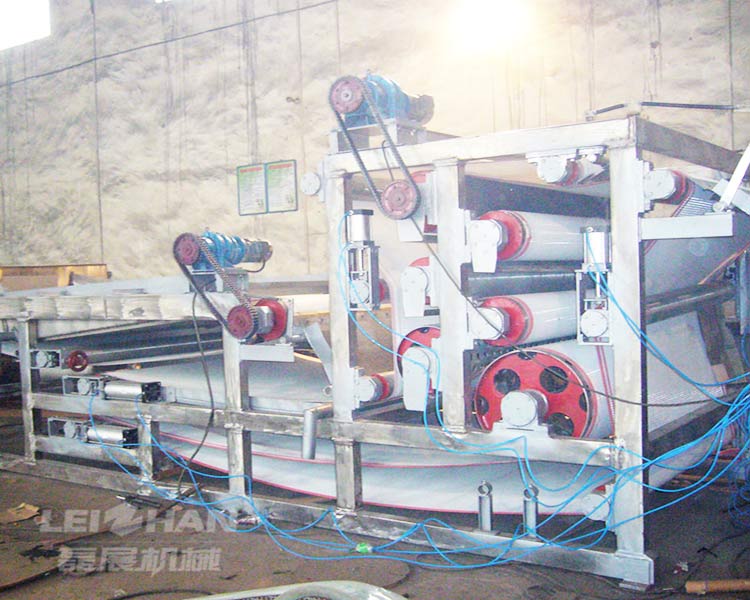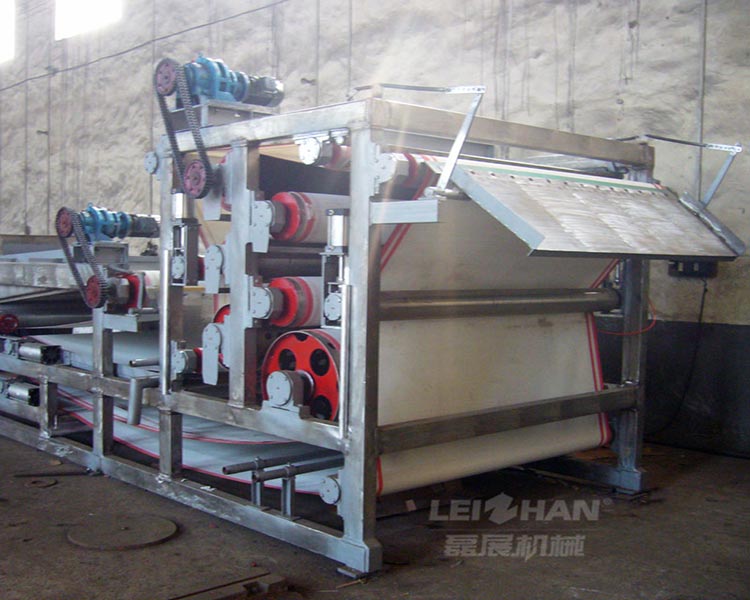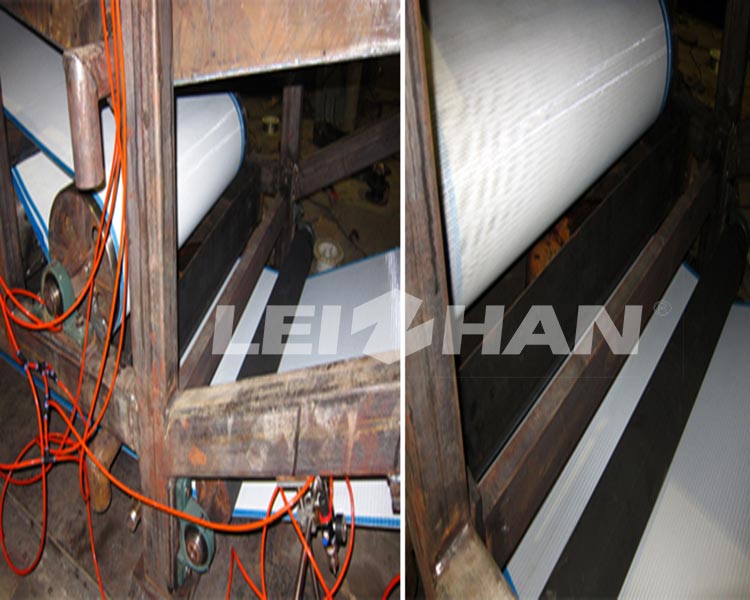HD Series Sludge Dewatering Machine
HD Series Sludge Dewatering Machine is mainly used to concentrate sludge in paper making industry, municipal engineering, etc.
Application & Feature
1. Double helix network structure.
2. Wedge dehydration, a specially designed dewatering roll.
3. Pneumatic tensioner.
4. High sludge concentration, low energy consumption.
Main Specification
| Type | HD-1 | HD-2 | HD-3 | HD-4 | Note |
| Width of Net (mm) | 1500 | 2000 | 2500 | 3000 | Pneumatic (manual) adjust deviation, Pneumatic(manual) tensioner, anticorrosive processing. |
| Speed of Belt(m/min) | 1.5-8 | ||||
| Concentration of Input Pulp(%) | 1.5-4 | ||||
| Concentration of Output Pulp(%) | 20-30 | ||||
| Pressure of Washing Water (mpa) | ≥0.5 | ||||
| Quantity of Mud (t/d) | 110-280 | 150-380 | 210-480 | 260-400 | |
| Motor Power(kw) | 2.2+1.1 | 3.0+1.5 | 4.0+2.2 | 5.5+2.2 | |
Working Principle
Since the liquid fluidity of the sludge is high, more water free state, no compressive strength, the first to enter the gravity dewatering zone for removing water free state, reducing sludge mobility, greater bond between the particles and flocks force, and then enter the wedge preload dehydration stage, sludge dewatering by gravity, almost completely lost mobility for maneuver to prepare for dehydration dehydration and shear.
After gravity sludge dewatering zone and wedge dehydration, basically the removal of free water and moisture inside the flock into the swing of dehydration, by roundabout stick diameter changes, gradually increasing the belt tension, gradually dehydrated form, when belt mud into the smaller diameter of the roll body, with a press force by the tensile force generated by the filter into two symmetrical upper and lower filter belt, by the different rotational direction of the shearing force generated by the dehydration treatment.



